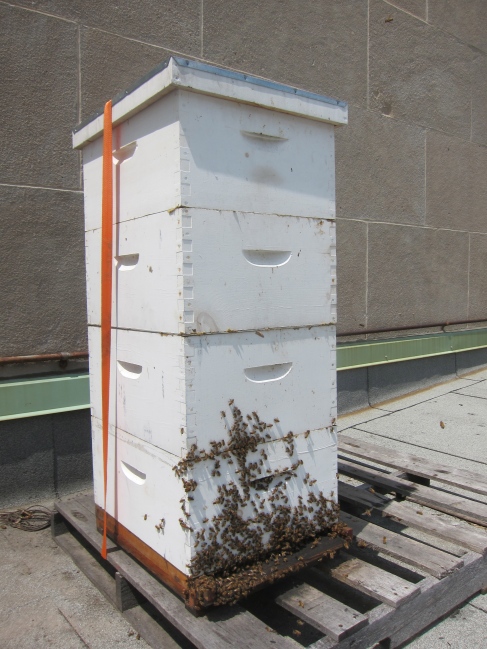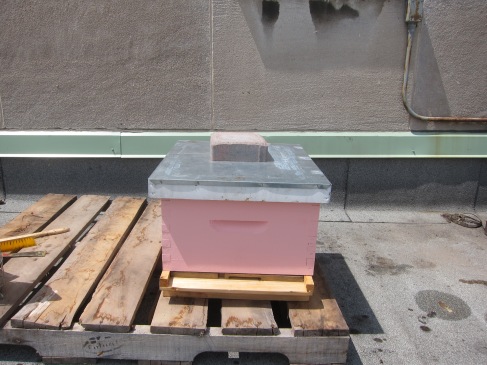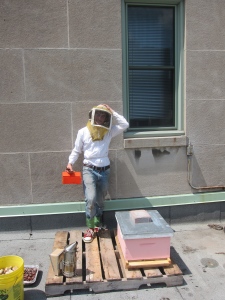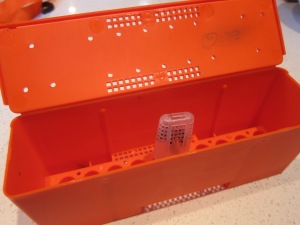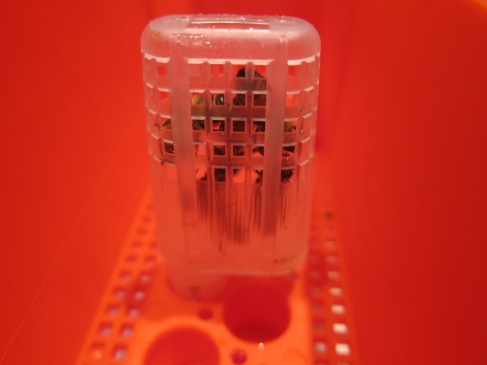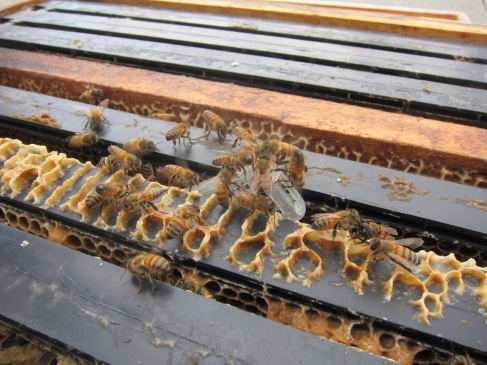Lundi dernier, nous avons effectué notre première inspection de l’année. Pour certain(e)s, il s’agissait aussi de la première fois qu’ils mettaient les mains dans les ruches! Les photos que nous avons intégrées dans cet article ont toutes été prises par Jasmine Waheed, photographe professionnelle.

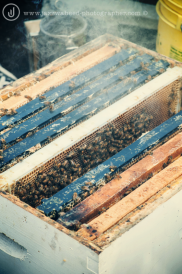
Les abeilles étaient très calmes, les ruches étaient fortes (malgré un taux élevé d’infestation aux infâmes varroa destructor) et nous avons aperçu les deux reines, qui semblaient en santé. Elles sont toutes deux marquées de rouge, ce qui indique qu’elles ont été achetées l’an dernier. Les ruches dégageaient une odeur agréable et nous n’avons pas observé de signes de maladies.

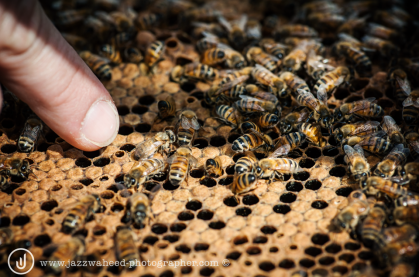
La ruche sud était nettement plus avancée que celle du nord, et presque tous les cadres étaient occupées par du couvain dans tous les stades : oeufs, larves, couvain operculé (fermé). Nous avons même assisté à quelques naissances, comme sur la photo, juste à côté du doigt de Jonathan! Cela signifie que la population de la ruche va exploser d’ici une semaine – et peut-être même avant! En effet, puisque le couvain est operculé dès le 9e jour et que les abeilles en sortent le 21e jour, il ne peut se passer qu’une douzaine de jours entre la naissance et le moment où on remarque que le couvain est operculé. Puisque nous ne savons pas quand le couvain a été operculé, il n’y a aucun moyen de savoir quand les abeilles en émergeront – cela pourrait très bien déjà avoir eu lieu! Sauf en ouvrant les ruches fréquemment, il n’est pas possible d’en être sûr(e). Toutefois, nous essayons de minimiser les interventions sur nos ruches puisque celles-ci constituent une grande source de stress pour les colonies.
Nous hivernons nos abeilles dans des colonies de deux hausses gorgées de miel ou de sirop. En général, les abeilles commencent l’hiver dans la hausse du bas, puis montent lentement vers les réserves du haut à mesure que celles du bas s’épuisent. Au printemps la chambre à couvain se trouve donc habituellement dans la hausse du haut. Alors que dans les ruches Warré les abeilles construisent de haut en bas, elles font l’inverse dans les ruches de conception Langstroth, que nous utilisons. Afin de donner plus d’espace de ponte à la reine, nous avons inversé les deux hausses à couvain. Puisque le manque d’espace pour la ponte est un des principaux facteurs d’essaimage, il s’agit d’une approche préventive.
Nous avons aussi inspecté la ruche de McGill, qui a survécu à l’hiver mais qui demeure très faible. Nous avons décidé de jumeler cette colonie à un des nucléis que nous recevrons d’ici quelques semaines, ou à un de ceux que nous créerons nous-mêmes en divisant nos ruches du Santropol Roulant. Continuez à nous suivre pour plus de détails sur les interventions à venir!


